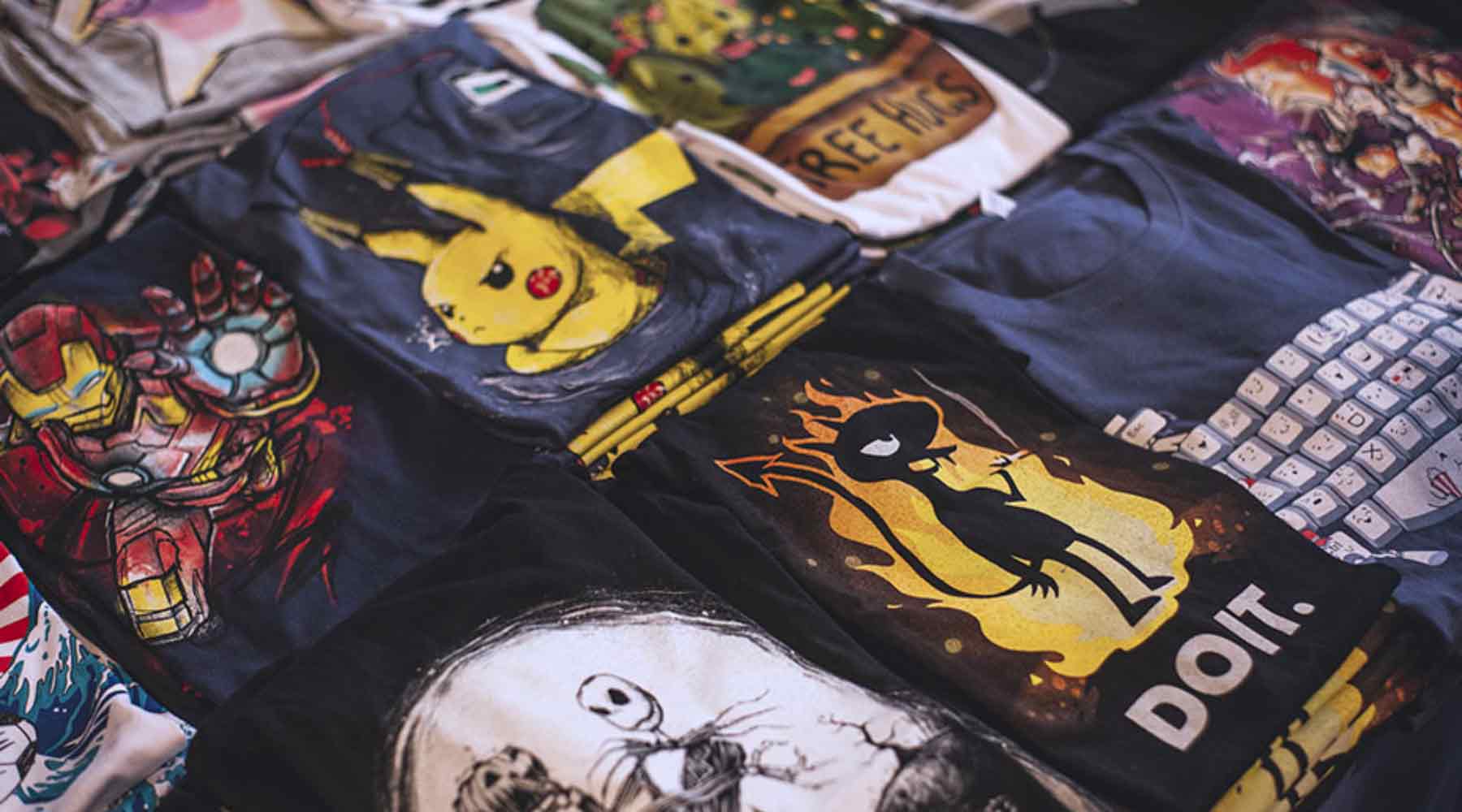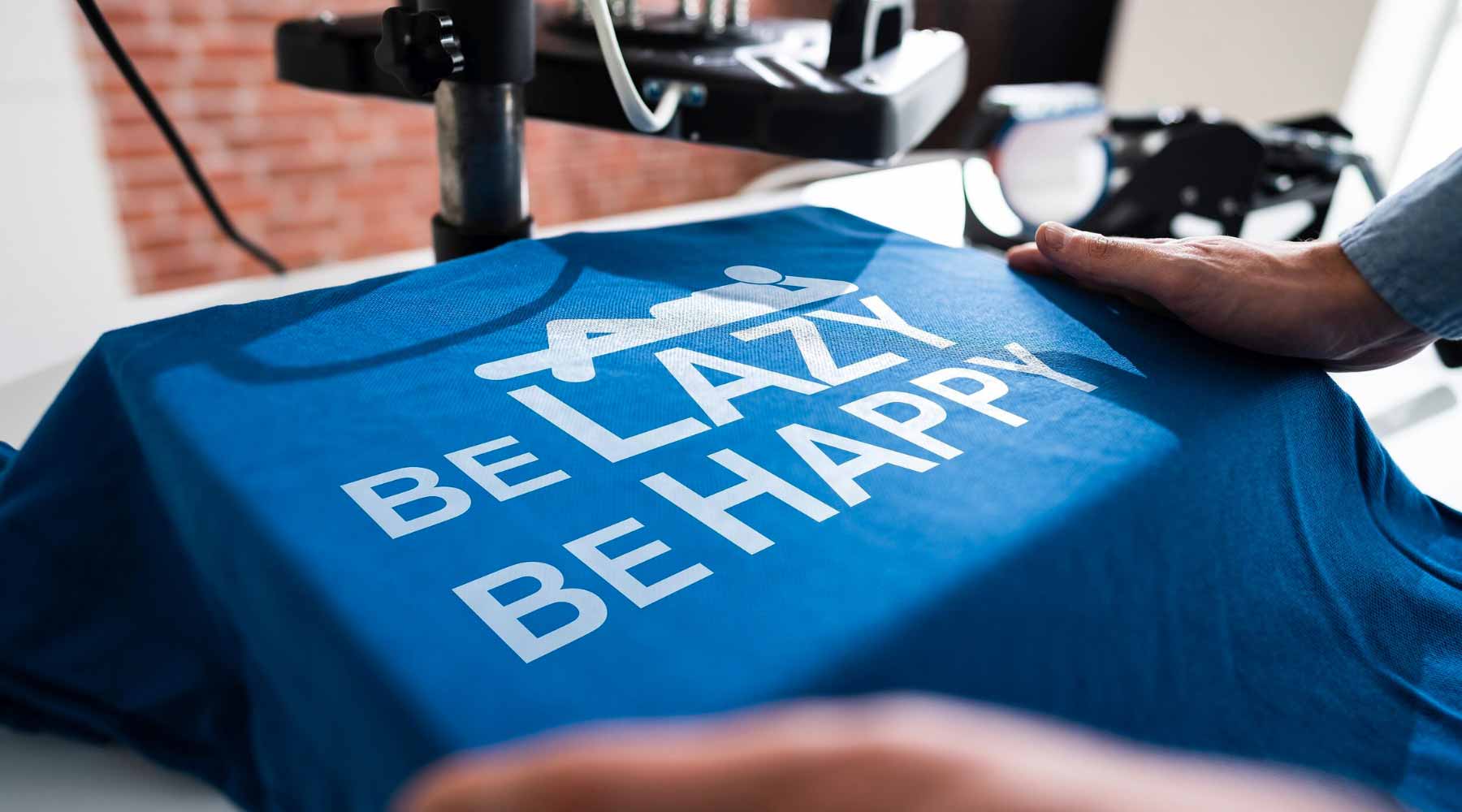Sell Print-on-demand T-shirts: 11 Common Mistakes to Avoid
-
Table of contents

Starting to sell print-on-demand t-shirts is an exciting and challenging venture with many new things to try. This article covers real-world lessons from 11 common mistakes newcomers make the most. Practical experience is a valuable stepping stone on your path to success. Get ready to dive into the dynamic world of print-on-demand!
1. Sell Print-on-demand T-shirts to a Broad Audience
The mass print-on-demand t-shirt market attracts a large number of sellers, resulting in high competition. Newcomers find it challenging to stand out among bigger rivals, who already possess a solid customer base and loyal following.

The broad market attracts many prin-on-demand sellers
Furthermore, it's difficult to create t-shirt designs that resonate with everyone. You may end up with an excess of ideas and artwork. Consequently, your customers may also feel overwhelmed when searching for the perfect item to purchase. Because your t-shirt don't strongly appeal to any specific segment, it results in expensive advertising costs and low conversion rates.
Let's avoid this common mistake by following the guidelines below:
- Research the market to stay updated on trends and insights, helping you identify specific gaps and profitable niches to sell print-on-demand t-shirts.
- Start with your passion or the communities you belong to create products that align with buyer demands.
- Offer personalized print-on-demand t-shirts to cater to individual tastes within your chosen niche.
💡 You may concern: How to Sell T-shirts Online With a Profitable Niche?
2. Opt for a T-shirt Supplier With Lower Quality
Low-quality t-shirts are a real deal-breaker for your success in the print-on-demand business. These subpar t-shirts often suffer from issues like fading colors, uncomfortable fabrics, and a tendency to wear out quickly after just a few washes. Such drawbacks lead to disappointing customer experiences.

Print-on-demand suppliers should handle the fulfillment process well
Negative reviews about the quality of your print-on-demand t-shirts may damage your business’ reputation. They also affect the purchase decisions of potential consumers and erode buyers’ loyalty. Moreover, choosing inferior print-on-demand providers risks you financial losses due to refund requests.
With the print-on-demand model, you can’t involve the fulfillment process of third-party suppliers. However, you can select reliable partners with some tips below:
- Research to identify trustworthy suppliers by looking at their reviews, reputation, and refund policy, especially in cases of poor-quality t-shirts.
- Evaluate t-shirt materials and print technology used by potential partners to guarantee the delivery of top-notch products.
- Order a sample to recheck the t-shirt quality firsthand before offering it to customers.
3. Invest Excessive Time in Crafting Unique Designs
Unique artworks don't always come with higher sales, as some individuals prefer simpler, relatable, and trendy designs. When your designs are overly distinctive, your t-shirts are more challenging to reach a wide audience.

Creating unique designs often takes a lot of time and effort
Designing intricate graphics takes considerable time and effort, which can slow down your production process. Spending too much time on a single design means you produce less artwork for t-shirts. Consequently, this limits the variety of products you can test, scale, and potentially turn into winning ideas.
The fashion and design industry is known for its fast-changing trends. Overinvesting in creation can cause you to miss out on current trends to maximize earnings.
While quality remains important, quantity holds equal significance. Here are some practices to help you strike a balance between creativity and efficiency.
- Develop a well-defined design strategy that includes a mix of evergreen, trendy, and unique designs.
- Utilize design templates to speed up the creation, allowing you to spend valuable time on other aspects of the business.
- Offer customer personalization choices to create tailor-made tees and reduce the design time.
4. Neglect the Significance of Mockup Images
Design is the soul of your print-on-demand t-shirts, and a well-crafted mockup can make your target audience love at first sight. Underestimating the importance of mockups profoundly impacts your customers' purchasing decisions.

Using eye-catching mockups to entice more customers
Customers often associate well-designed visuals with better products as they believe that what they see is what they will receive. An eye-catching mockup evokes a positive emotional response, prompting potential buyers to take action. In contrast, even if your design is excellent, lacking an appealing thumbnail makes your brand less competitive compared to your rivals.
Without a professional appearance, potential buyers may be skeptical about the quality of your T-shirts. Low trust can lead to a decrease in conversion rates and overall earnings of your print-on-demand business.
When it comes to creating mockup images for print-on-demand t-shirts, consider the following:
- Invest in creating high-quality mockup images with various angles and color variants to accurately represent your products.
- Stay updated on design trends and best practices to ensure your mockup remains fresh and appealing to your target audience.
- Prefer using a model or mannequin to display your T-shirt since it helps your customers visualize how the T-shirt looks more easily.
Tips: If possible, choose mockup styles relevant to your designs. For example, if you sell print-on-demand t-shirts for dog lovers, include a dog in your images to entice more high-demand customers.
5. Ignore the Licensing Process for Your T-shirt Brand
People often overlook the importance of licensing when starting a print-on-demand T-shirt store. However, neglecting to license can lead to legacy troubles such as tax penalties, and copyright infringement. These issues can have lasting consequences for your business and brand’s reputation.

Register licensing to sell print-on-demand t-shirts
Registering your print-on-demand business is crucial to ensure legal compliance. It's important to note that business registration requirements can vary widely in states and countries. Be sure to stay informed about specific licensing and permitting obligations in your area. Adhering to local laws helps you avoid legal issues and operate your business smoothly.
When you sell print-on-demand t-shirts, make sure to secure copyright protection for your artwork. Obtaining a copyright license helps to safeguard your intellectual property from unauthorized use. Furthermore, it also may help you generate extra income for your business by collecting royalties when others use your artwork for commercial purposes.
Here are some key takeaways to help you avoid mistakes related to the legal aspects when selling print-on-demand t-shirts
- Invest time in learning laws and regulations relevant to your business to prevent unintentional oversight.
- Seek legal counsel to update the latest information and receive helpful advice on legal matters.
- Maintain licenses and contracts is essential to protect your rights and avoid potential disputes in business.
6. Lack of Familiarity With T-shirt Printing Methods
The quality of print-on-demand t-shirts depends on many factors and the printing method is one of them. Using the wrong printing method or not understanding the intricacies of a specific technique can result in poor print quality. Faded colors and blurry design make your products less appealing to buyers. Subpar print quality can hurt your brand reputation by negative reviews.

Printing methods significantly affect t-shirt quality
Another consequence of this mistake is inefficient production. Some printing methods require more expensive equipment or materials, which can eat into your profit margins. Others may prolong processing times, leading to slower order fulfillment.
To mitigate these issues, invest time in learning about and staying up-to-date with the various printing techniques. Here are 3 popular printing methods commonly used for print-on-demand t-shirts.
- Screen printing offers outstanding color vibrancy and long-lasting durability. This technique is ideal for large orders but not well-suited for intricate designs with more than four to five colors.
- Heat transfer is renowned for the ability to print unlimited colors at an affordable cost. However, the final tees can be of lower quality and less durable than other techniques.
- DTG provides high-quality, detailed prints but it has limitations on certain fabrics and colors. This method is not suitable for large orders due to the time it takes to print each t-shirt.
7. Make Inappropriate Pricing Strategy Decisions
Price is indeed a vital factor that directly impacts the success of your print-on-demand business. Setting prices too low can lead to negative profits. Conversely, a high price makes your products less competitive compared to your rivals and decreases potential audiences.

Pricing strategy is vital for print-on-demand business growth
Poor pricing hinders your business growth potential. Insufficient profits from underpriced products may impede cost coverage and limit reinvestment opportunities. Inconsistent pricing can create feelings of unfairness among buyers and lead to eroding their trust and loyalty to your brand. As a result, they may start seeking more reliable sellers in the market who offer transparent pricing.
To prevent financial losses resulting from unwise pricing practices, consider these essential tips:
- Include all your costs when determining prices to calculate an accurate profit margin, ensuring sustained profitability.
- Conduct research on the t-shirt niche, competitors, and customer expectations to choose a suitable pricing strategy.
- Regularly review your pricing strategy to evaluate its efficiency and make prompt adjustments when necessary.
8. Fail to Adequately Prepare Prior to Launch
As a newbie in selling print-on-demand t-shirts, you may desire quick success and immediate profits. This mistake can make you rush into launching your store without thorough preparation. Though the print-on-demand model is friendly access for everyone, it still involves several complex parts, from product design, and e-commerce website setup, to business strategy development.

Thorough preparation before launching your print-on-demand store
For example, launching an online store without proper optimization can result in slow loading times, broken links, and a poor user experience. These technical errors often drive potential audience away before they can make a purchase. Your print-on-demand business may suffer from losing sales and bad feedback from frustrated customers.
To ensure a successful start in the print-on-demand business, take the time to prepare meticulously before getting your store into the world.
- Create a detailed business plan with a clear roadmap to ensure you don't overlook critical aspects.
- Test your buying experience as a customer by going through the entire purchasing process: choosing products, payment process, and order fulfillment.
- Have a backup plan in place to minimize disruptions, ensuring a smooth shopping experience for your target niche.
9. Skip to Monitor the Fulfillment Process
When selling print-on-demand t-shirts, third-party suppliers handle everything involving fulfillment services, from printing to packaging and shipping to the buyers’ house. However, it's crucial to maintain oversight to ensure a smooth operation and avoid unexpected mistakes.

Keep an eye on the fulfillment and shipping process
Delays in order processing or shipping by your third-party suppliers can test the patience of customers. Lengthy wait times for their products often lead to disappointment. They may opt to cancel orders or express their dissatisfaction through negative feedback.
To mitigate these challenges, it's crucial to keep an eye on the fulfillment process closely. By providing timely updates and offering solutions in case of delays or issues, you can preserve trust and satisfaction.
To meet and exceed expectations in the print-on-demand t-shirt business, it's essential to focus on the following key aspects:
- Automate the fulfillment process with print-on-demand suppliers to save time and streamline your operations.
- Regularly update shipping status to proactive communicate with customers and resolve problems.
- Provide clear shipping timeframes helps to reduce the likelihood of complaints, negative reviews, and disputes from customers.
10. Set Overly High Expectations for Initial Orders
A new t-shirt store always takes time to reach its targeted customers and start generating sales. Setting unrealistic goals for the initial stage often results in a loss of motivation. The low sales during this phase can lead to feelings of stress and anxiety, making you contemplate giving up. Moreover, the fear of failure can hinder your willingness to take risks and explore new opportunities.

Set up a realistic target when selling print-on-demand t-shirts
Moreover, overemphasizing early profits can lead to short-term thinking. When you focus on achieving high profits quickly, you sacrifice sustainable growth for immediate financial gains. Without a strong foundation, your t-shirt print-on-demand brand may struggle to expand or thrive in the long run.
Take a look at some practices to sidestep this typical mistake in selling print-on-demand t-shirts.
- Establish achievable goals that are realistic and based on relevant research.
- Cultivate patience in your business approach, aiming for steady and long-term results.
- Plan for sustainable growth with milestones and strategies for scaling your business gradually.
11. Attempt to Sell on Multiple Platforms From the Outset
New businesses often have limited time, money, and manpower. Trying to handle multiple sales channels right from the start can strain these resources. Furthermore, each platform comes with its own set of tools, interfaces, and best practices. Managing various sites can be overwhelming, especially for print-on-demand newbies.

Focus on a single platform to optimize print-on-demand store
Focusing on too many platforms simultaneously can prevent you from giving any single one the attention it needs to thrive. As a result, you hardly optimize your presence and maximize sales on any specific platform. It's advisable to start with one venue where you excel initially. Once you've established a strong presence and gained valuable experience, conquering new ones will be easier.
Here are key considerations for choosing an appropriate channel to start selling print-on-demand t-shirts:
- Ease of use: As a beginner, you should opt for a user-friendly platform to easily set up your store without a steep learning curve.
- Costs and fees: Consider the costs associated with each platform, including subscription fees, transaction fees, payment processing fees, etc.
- Print-on-demand integration: Prefer the platform that integrates seamlessly with your chosen print-on-demand service, such as Shopify to save time and reduce errors.
The path to launching your print-on-demand t-shirt store is now more accessible than ever. Embracing mistakes as learning opportunities, this article hopes to equip you with invaluable insights to succeed over challenges. Join Teeinblue Global Community and embark on a journey to sell print-on-demand t-shirts now!
Newsletters
Subscribe to get exclusive POD tips, trends, and insights!
Tags:
print on demand
